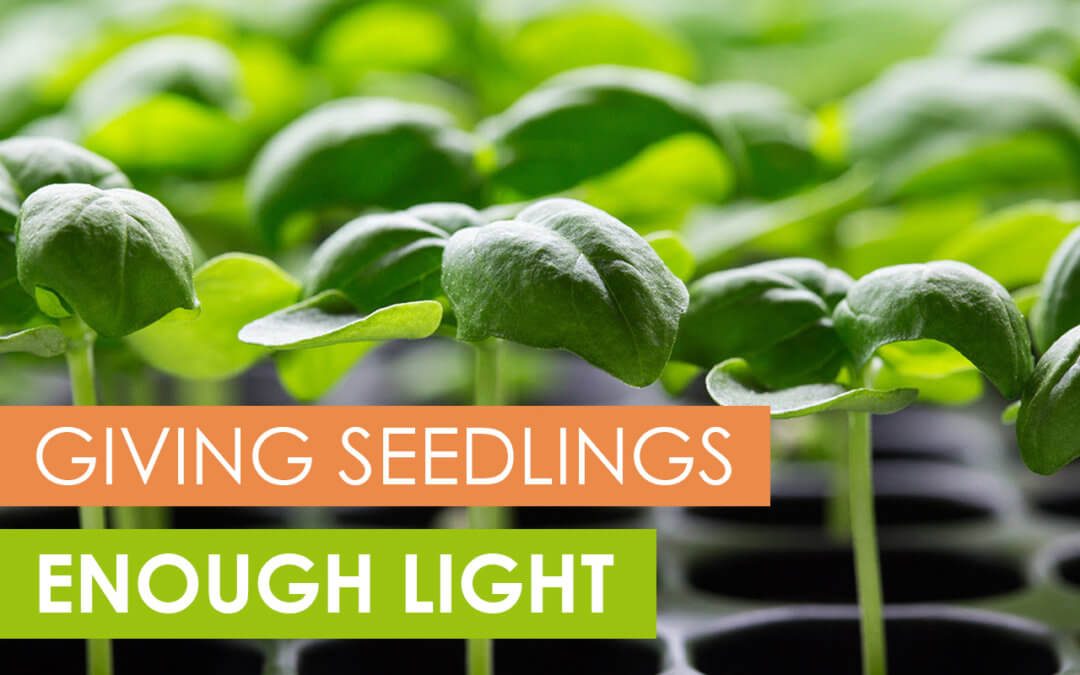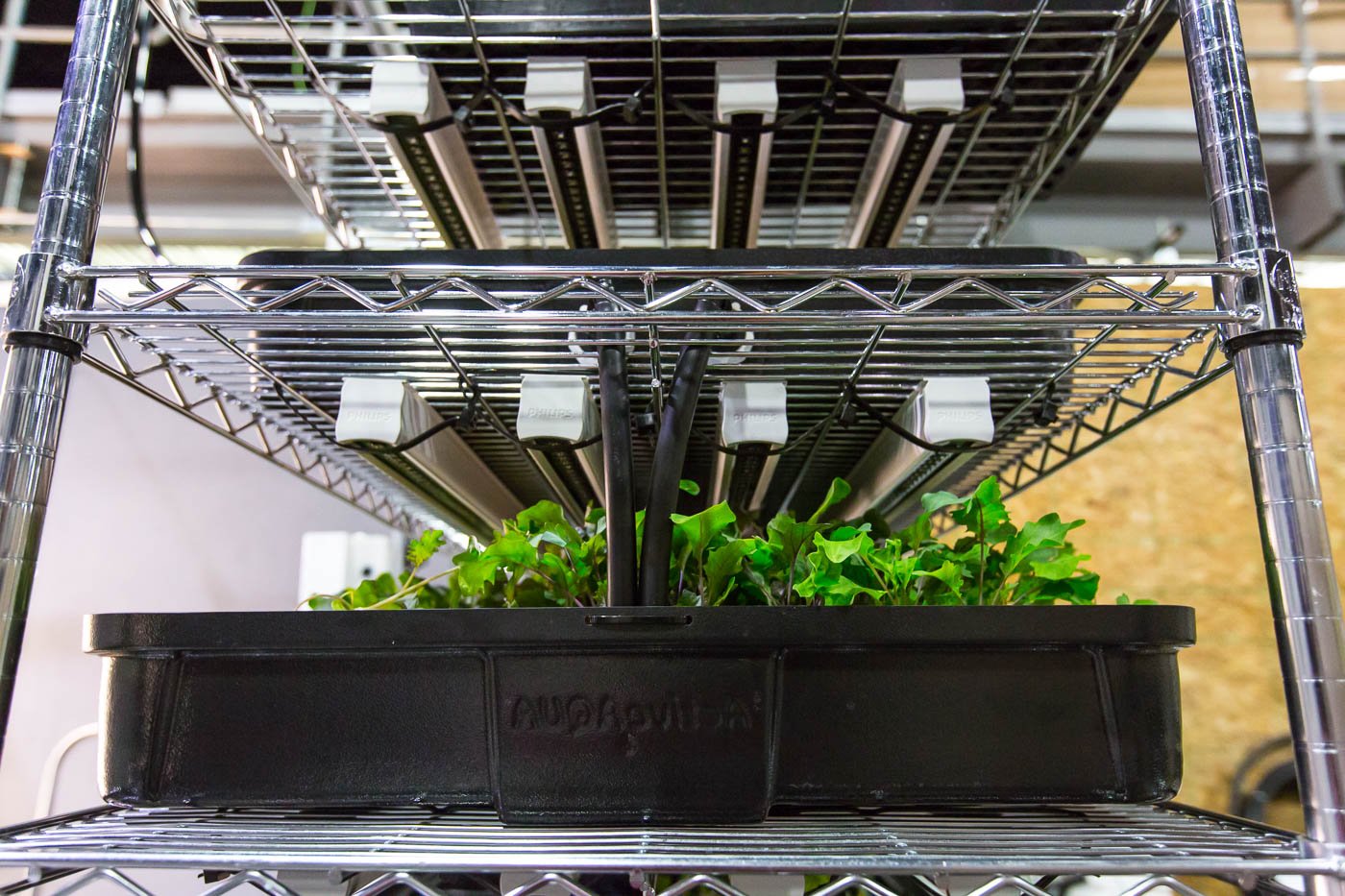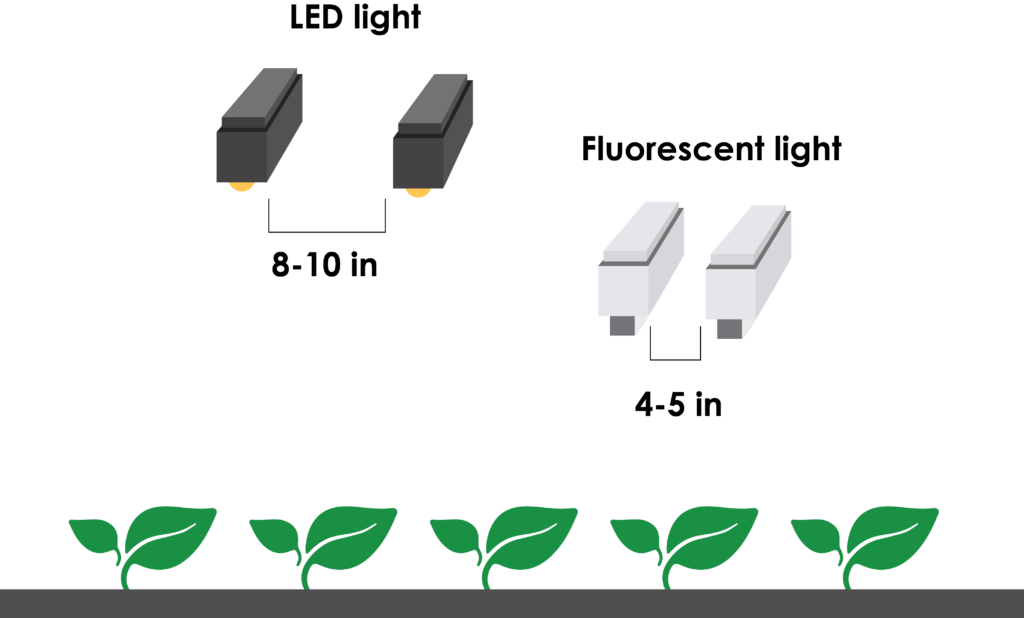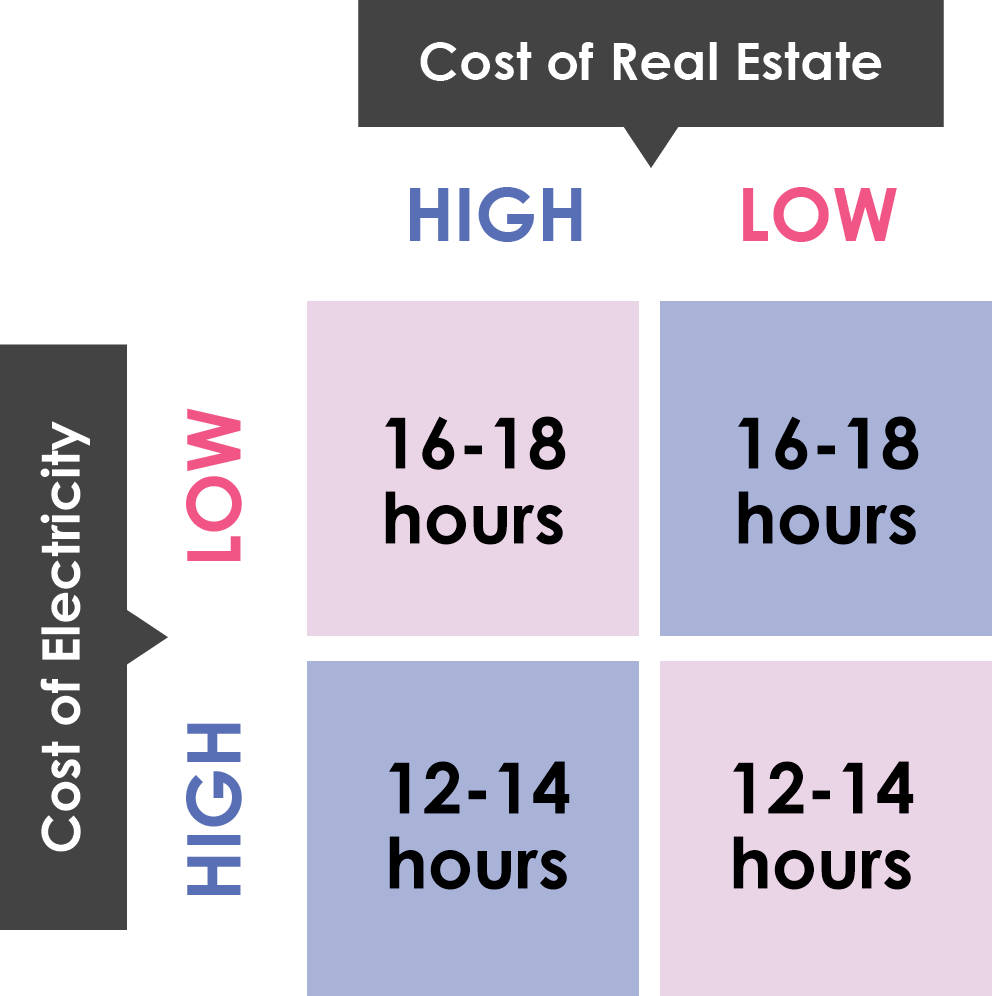Why your seedlings aren’t getting enough light
Light is the number one underestimated factor of growing, even at seedling stage. If seedlings don’t have enough light, they grow more slowly and can become leggy. Overall, growers who provide inadequate seedling light have longer crop timelines and higher rates of seedling mortality.
Why do growers mistake the level of seedling light?
They don’t have enough lighting.
They place lighting too far from seedlings (bad coverage).
They don’t leave lights on long enough.
Usually, these problems are easy to fix: add lights or adjust your seedling light schedules! Here are some general seedling light guidelines to speed up production and save you money on seeds.
How far away should I place seedling lights?
You’ve got to keep two goals in mind: the amount of light you’re giving seedlings, and the coverage of light that you’re giving seedlings.
1) Amount of light:
We can measure the useful light to a plant (PAR – photosynthetically active radiation, or the parts of light that the plant can use to photosynthesize) in micromoles per meter squared per second (micromoles/sec/m²) . The goal here is to deliver 120-150 micromoles/sec/m² of PAR to your seedlings.
Some people will use a PAR meter to figure out how much PAR they’re getting to their seedlings and will adjust the distance of their lights based on that measurement. Don’t worry- you don’t need one of those, if you’re using LED bars or fluorescent bars. Just remember the following distances.
LED bars (like Phillips): 8-12 inches away from seedlings
T5 fluorescents (like these): 5-6 inches aways from seedlings
2) Coverage of light
The next question is coverage. You can usually just eyeball this to figure out how far apart your lights need to be to deliver the same intensity of light across your entire seedling tray.
Again, we’ve outlined two simple rules to follow if you’re using the most common seedling lighting types:
LED bars: 8-10 inches apart from each other
T5 fluorescents: 4-5 inches apart from each other
Stick to these rules, and your seedlings will be ready to transplant in no time.
How long should I keep lights on my seedlings?
One convenient thing about artificial lights is that you can set them to turn on and off by themselves using timers.
But how long to keep light on your seedlings?
Balancing light and electricity costs
Growers are going to need 12-18 hours of light per day.
Your place in that range depends on the costs of two things: real estate and electricity. Which one is inherently higher for your facility?
This gives you four situations.
1) If the cost of real estate is higher, then you want to move things through your space quickly. This means that you will be paying for more hours of light (18 or so) to move crops along.
2) If the cost of electricity is higher but you have plenty of space, then you’ll want to reduce lighting a bit (12 or so hours). This means that your crops will grow slower.
3) If both costs are equally high like they are at our farm here in Laramie, then you’ll find a balance. We give our crops about 14 hours each day.
4) If both posts are equally low, then go ahead and run them fast, at about 18 hours a day. (Just remember to give crops everything else that they need as well, like airflow and CO2, or they won’t be able to use all that light.
Learn more: How to make a seedling system like this one.
Don’t forget to harden your seedlings before transplant!
Remember to harden off your seedlings before transplanting them! Hardening seedlings includes hardening them to things like temperature and humidity, to reduce plant shock. It also means hardening them to light.
To harden your seedlings, place them in the main growing area for a few hours a day in increasing periods over about a week.
Need light help with the rest of your farm?
Light is one of the most important factors to growing healthy crops. Being a modern farmer like you comes with both a blessing and a curse: on one hand, light technology has never had so many quality options. On the other hand, choosing lighting can be a very overwhelming task.




